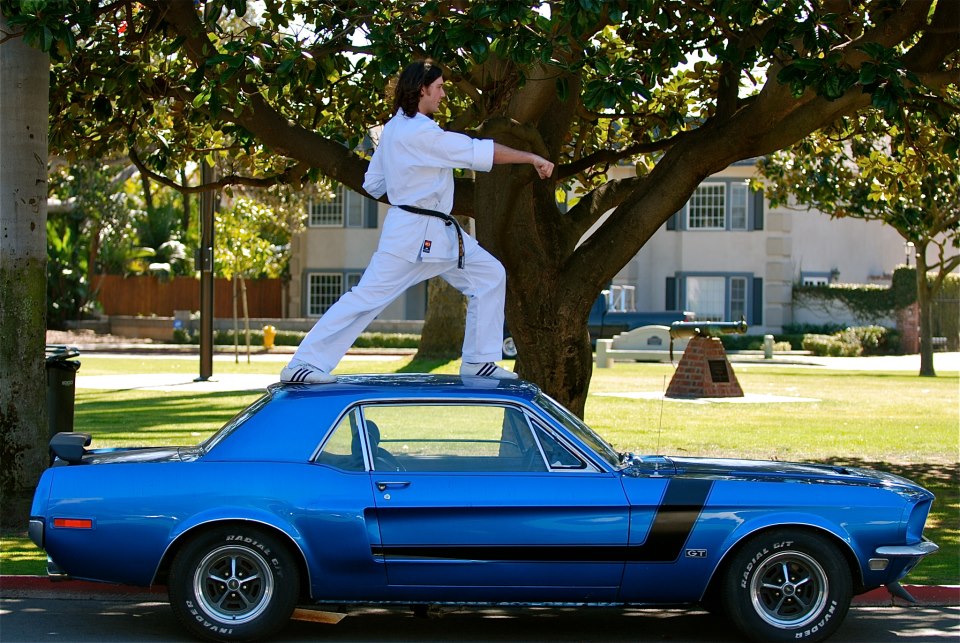5 Questions with David Adams; Owner and Instructor, Martial Arts America
1. When did you discover karate? What has the journey been like in attaining your 4th degree black belt?
I started taking karate in 1993, when I was seven years old. I had previously tried traditional athletics such as baseball and soccer and did not find any particular attachment to them. I was not a natural athlete, so I had no motivation to improve. My parents made it clear to me that I had to do something physically challenging to stay healthy, so I tried karate. It was a perfect fit for me.
The colored belt system in karate is a series of goals that are set for you so that progress can be easily tracked. A great advantage for me was the fact that you improved individually and not as a team. No individual could hold me back from progressing. Vise versa, if I did not learn something as fast as someone else, I wasn’t holding anyone back.
Every time I earned a new belt, I was inspired to continue. The belt was physical confirmation of my progress. When I would feel like giving up, my parents would encourage me to stick with it.
Three years since my first karate class, I attained a Junior black belt at age 11. A Junior black belt is for students under the age of 18. When I turned 17, I was offered the opportunity to test for my 1st degree black belt. At 19, I earned my 2nd degree black belt, and by age 22 I successfully tested for my 3rd. Just a few months before I purchased Martial Arts America from my instructor, Mike Peled, I earned my 4th degree black belt. The black belt is the highest belt color given, and the 4th degree is associated with an instructor level.
2. What have you changed at Martial Arts America since taking ownership?
I didn’t want the students to feel any change during the transition, so I waited before I made any significant changes. I had been teaching most of the classes at Martial Arts America for over two years, so it wasn’t a large adjustment for our students.
Since taking ownership in October 2012, I have enhanced the overall look with Japanese furniture and décor. I also created a “Mommy and Me” class for parents and children aged 2-6 years old with a purpose of learning balance and motor skills.
In addition, I created an Executive Black Belt program for people who have non-traditional schedules, such as doctor’s or CEO’s interested in working towards a Black Belt who do not have the time to train regularly. I have even had busy high school students use the Executive program to reach their goals while working around homework and class projects.
After hours, we offer movie nights on occasion. I am also interested in creating an evening program for teens, as Coronado does not offer many activities for that age group.
3. What is your favorite part about teaching others?
Watching a student learn and improve is always incredible. Whether a four-year-old child has developed the coordination to do a technique they could not do before, a 16-year-old right after she does her hundredth pushup before earning a black belt, or an adult who thought they were too old to learn karate; each student is unique and it is always rewarding to watch their growth.
4. What are your overall goals for Martial Arts America?
Karate students at Martial Arts America are taught life skills such as respect, self-discipline and goal setting. We want to develop leaders who will take what they learn at the dojo (martial arts studio) and apply those teachings in daily life.
I want the public to understand that anybody can earn their black belt if they are motivated. I have taught individuals in their 70s, 80s; even people without limbs. A black belt is an attainable goal if you have the desire to do so.
5. Coronado is known to be safe, though it is still important to be aware of your surroundings. What are the most important tips you tell your students to be aware of when they are in an uncomfortable situation?
Do not be afraid to be rude to keep yourself safe. We all want our children to be polite, but they need to be confident in saying “no” in order to ignore or avoid an adult if they are uncomfortable.
Do not do anything to block out your surroundings. For instance, do not wear your headphone volume excessively loud and do not keep your eyes on your phone while you are walking down the street. Have situational awareness whether it is the middle of the day or late at night.
Always trust your instincts and be confident in your abilities, whatever they may be.


